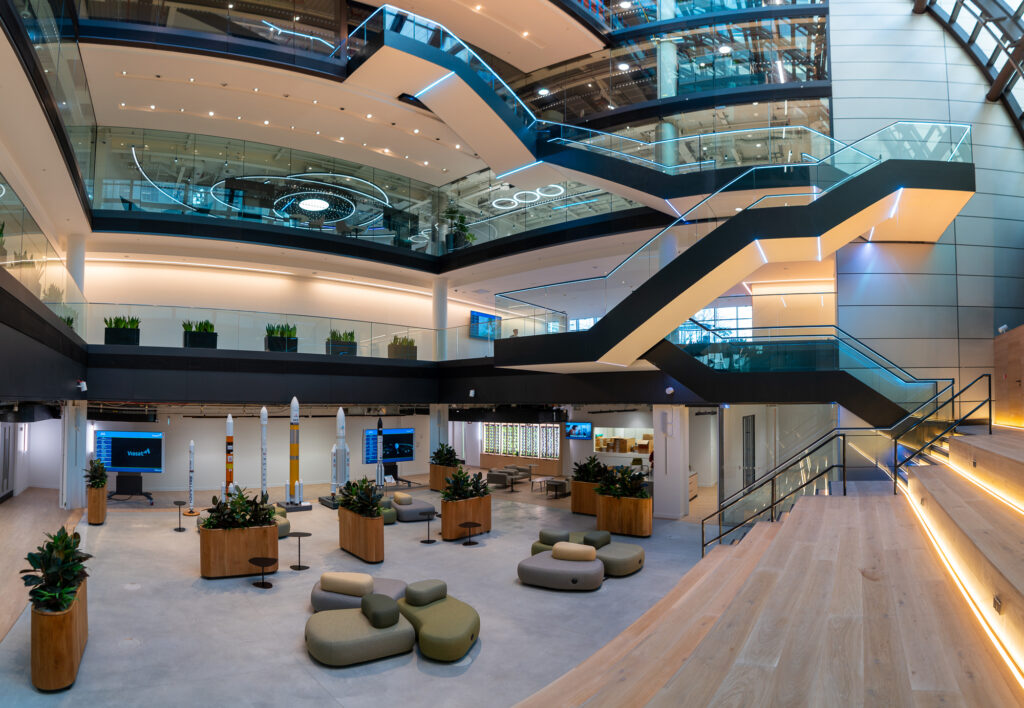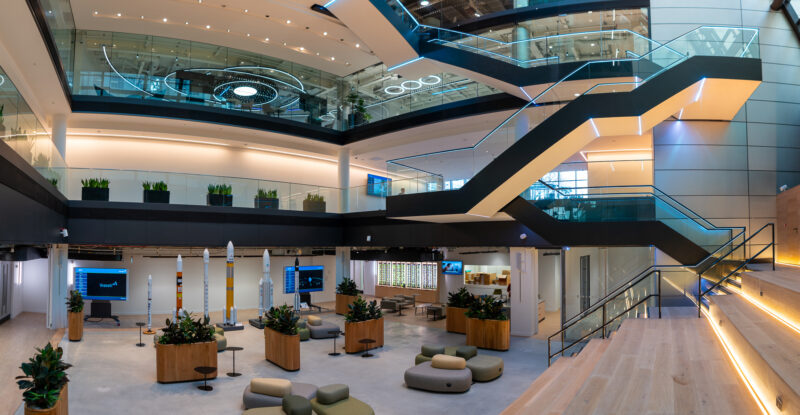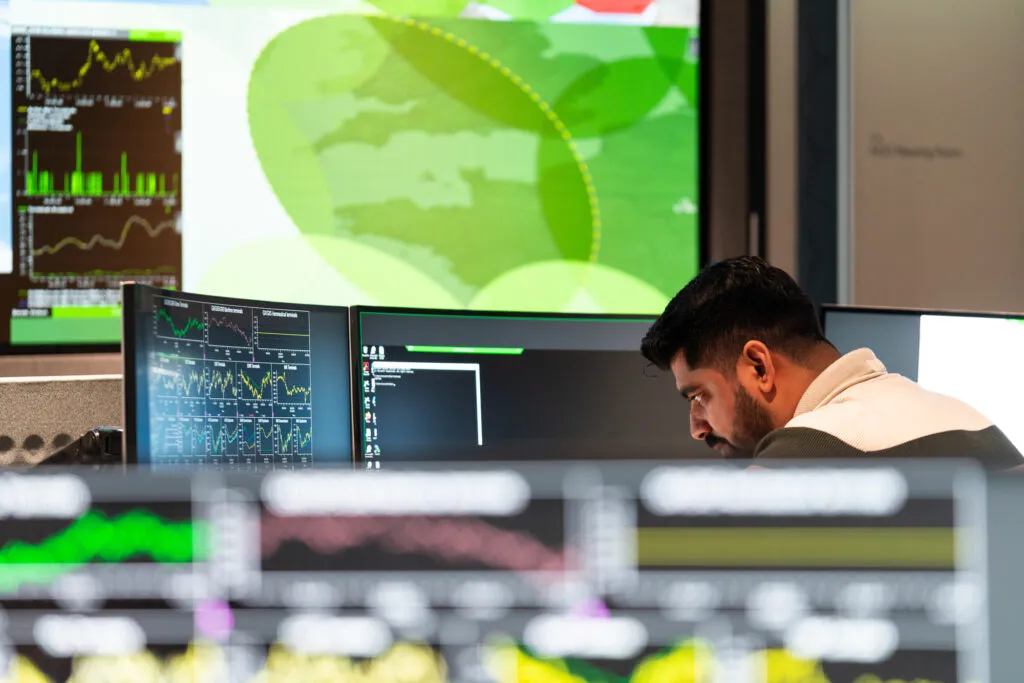Navigating pavements thronged with workers from London’s nearby financial district and turning into Finsbury Square, one might take surprise at Viasat’s newly opened International Business Headquarters. Just around the corner from a Marks & Spencer store, this seems like an unlikely spot for an international satellite communications hub and center of innovation.
But then it suddenly all makes sense.
Inside, the ground floor reception area is as spacious and welcoming as a quality hotel. And visitors are reminded of the Inmarsat acquisition that brought Viasat more formally to London.

Visitors entering the reception area could be forgiven for thinking Viasat is running a quality hotel at Finsbury Square. Image: Viasat
A short walk through security gates leads to an impressive auditorium where a large group of guests, media and staff gathered on 11 April to celebrate the building’s official opening.

Viasat will collaborate with partners to drive deployment of IoT solutions and direct-to-device services. Image: Viasat
Viasat’s London HQ is not of the standard corporate mold. There is a feeling of space and light across its floors, united by a staircase running the height of the building, through open-plan working levels and Viasat’s UK Network Operations Centre (NOC) and Satellite Control Centre.
There are also spaces for meetings, visitor hospitality, and staff wellness, a restaurant, table tennis, a library, and other amenities, plus stunning views across London. Reminders of space are ever present. Visitors can expect to see large-scale rocket models and lighting fixtures designed to evoke satellite orbits and starry night skies.

Auditorium and central space inside the London building. Note the large-scale rocket models and the care taken to create a stimulating, bright environment. The staircase goes all the way to the top. Image: Viasat
Every floor of the expansive building has its own character, none is significantly similar, and yet the Finsbury Square site reuses as much furniture and other material from Inmarsat’s old London headquarters as possible. It is also finished to the latest and toughest environmental standards.

Lighting features in recreational and workspaces are reminiscent of satellite orbits and the night sky. Image: Viasat
Some 800 people call the Finsbury Square building ‘their office’, but the nature of the work, including 24-hour NOC and satellite control functions, means the likelihood of all 800 being present is slim. Hot desking across all floors means that neither are they likely to be sitting in the same places.
Perhaps most impressive of the building’s spaces, the NOC and Satellite Control Centre sit back-to-back. On 11 April, there was no access to either room for visitors, but looking through large windows from inside the building it was possible to see that each had a long wall where huge screens are mounted, displaying, respectively, the status of each network and the satellites under Viasat’s control.
Should the individuals within these rooms need to shield the more sensitive aspects of their work, the windows may be made opaque at the touch of a button.
The NOC ‘wall’ includes sections for Viasat’s L-band and Ka-band networks, plus the hybrid S-band/air-to-ground European Aviation Network. Two members of staff calmly monitored systems whilst the event proceeded.
In normal operation the Satellite Control Centre is configured for a single operator. Smart software systems and autonomy allow this largely hands-off approach; more people may be required if a problem occurs, but these are rare and more likely caused by the sun’s position than anything sinister.
Viasat also makes much of the building’s Innovation Lab, a utilitarian room that will stir memories for anyone who has visited a university physics or electrical engineering department. The opportunity was taken, with industry partners, to demonstrate direct-to-device satellite connectivity, using a prototype device.
Viasat president Guru Gowrappan and UK Minister of State for Science, Research and Innovation Andrew Griffith both spoke at the event, enthusing over the company’s value to the UK and the country’s growing importance in the space market.

Guru Gowrappan, Viasat president, speaking at the 11 April event. Image: Matt Alexander/PA Media Assignments
A relevant comment of the day came up in conversation with Meherwan Polad, CCO, Viasat Aviation. Taking in the building’s extent and the magnificent views from its many windows, Polad declared: “I’m so lucky to be able to work in a building like this. To come here, for work. It’s just wonderful.”
With its new International Business Headquarters, Viasat has made space for space.

Andrew Griffith, UK Minister of State for Science, Research and Innovation, speaking at the 11 April event. Image: Viasat
Related Articles:
- Viasat sees entire Ka fleet supporting Royal Jordanian IFC in time
- Viasat still determining NGSO ambition and its pertinence to IFC plan
- Once an EAN adversary, Viasat cements commitment to hybrid network
- Delta Sync proves in sync with Viasat’s vision for IFEC
- Viasat on securing basic interoperability with GX via minor tweaks
- Viasat accelerates introduction of hybrid I-6 F1 satellite
- Viasat aero footprint sees vast expansion as Inmarsat purchase closes
Featured image credited to Viasat













